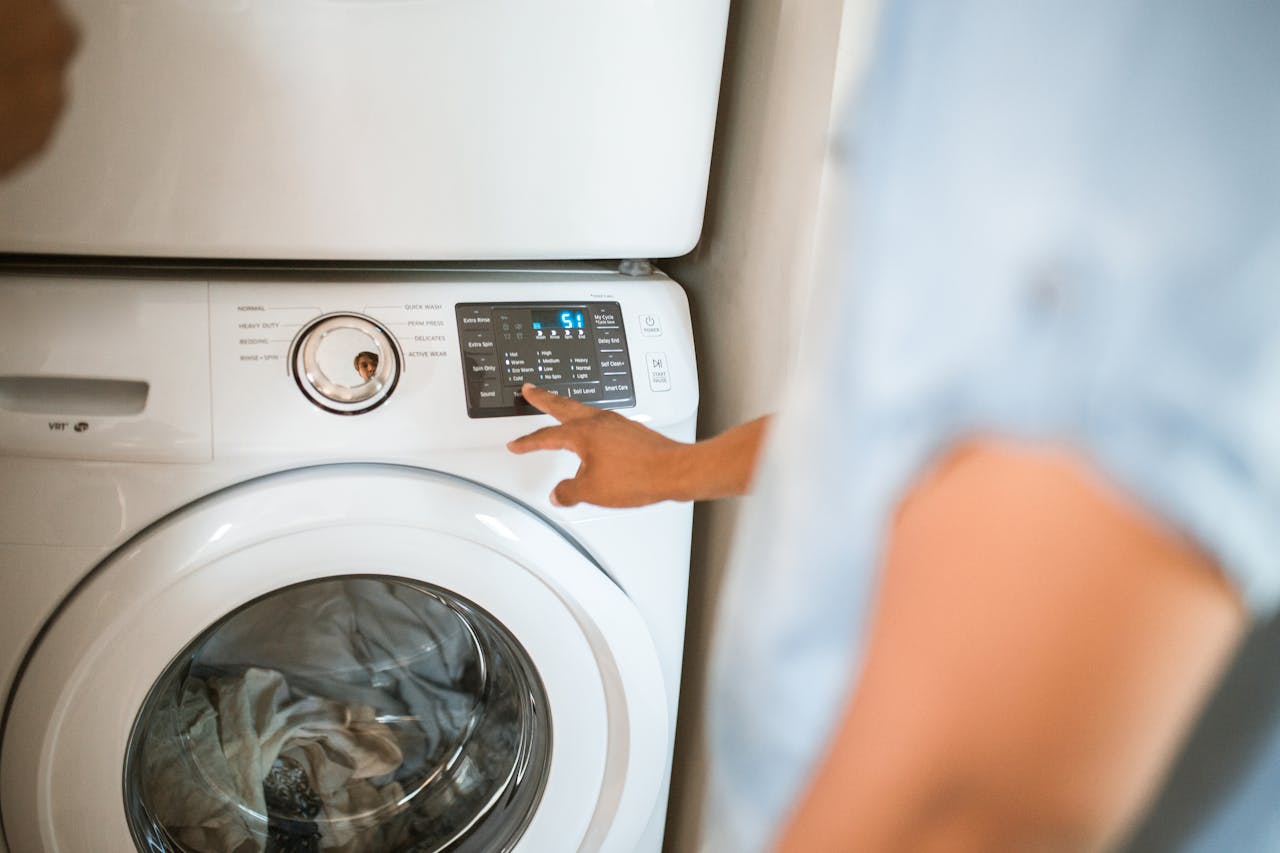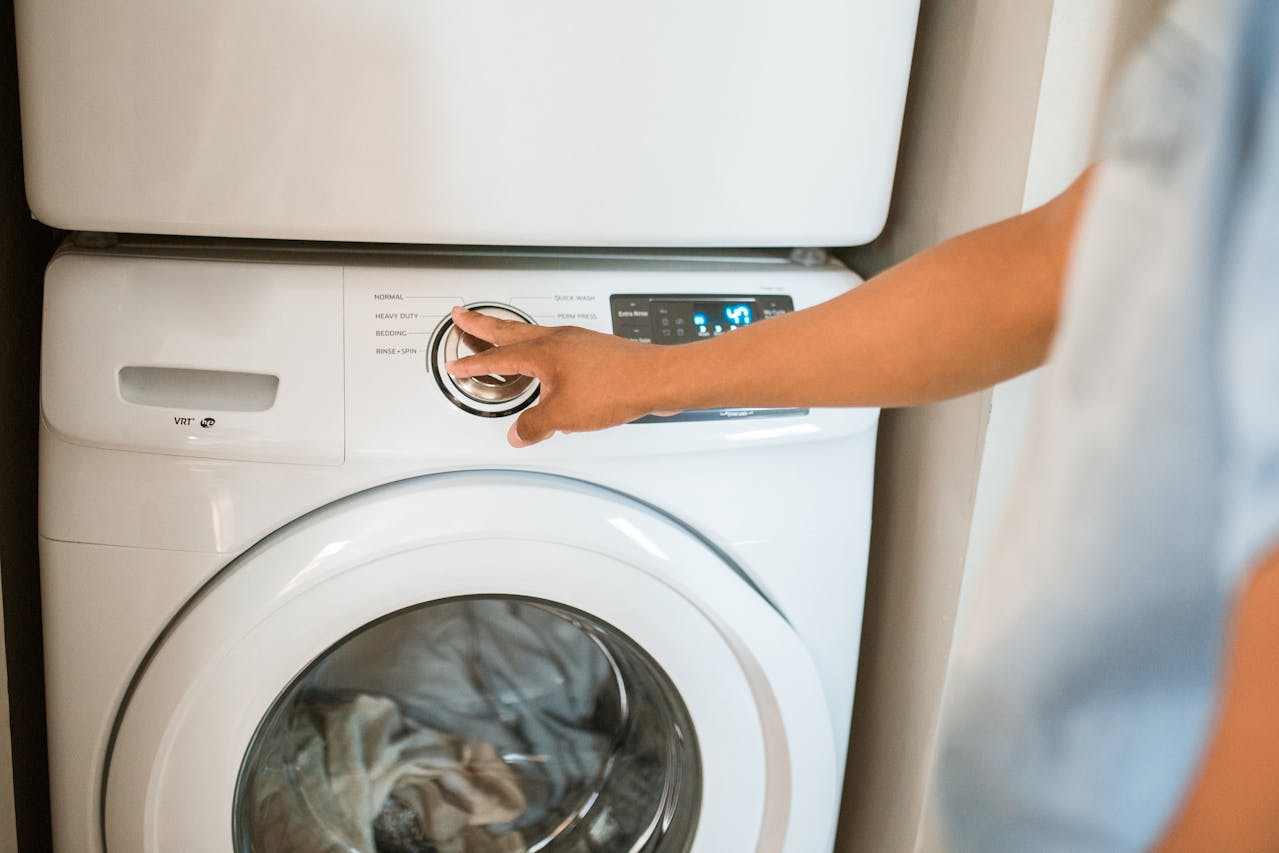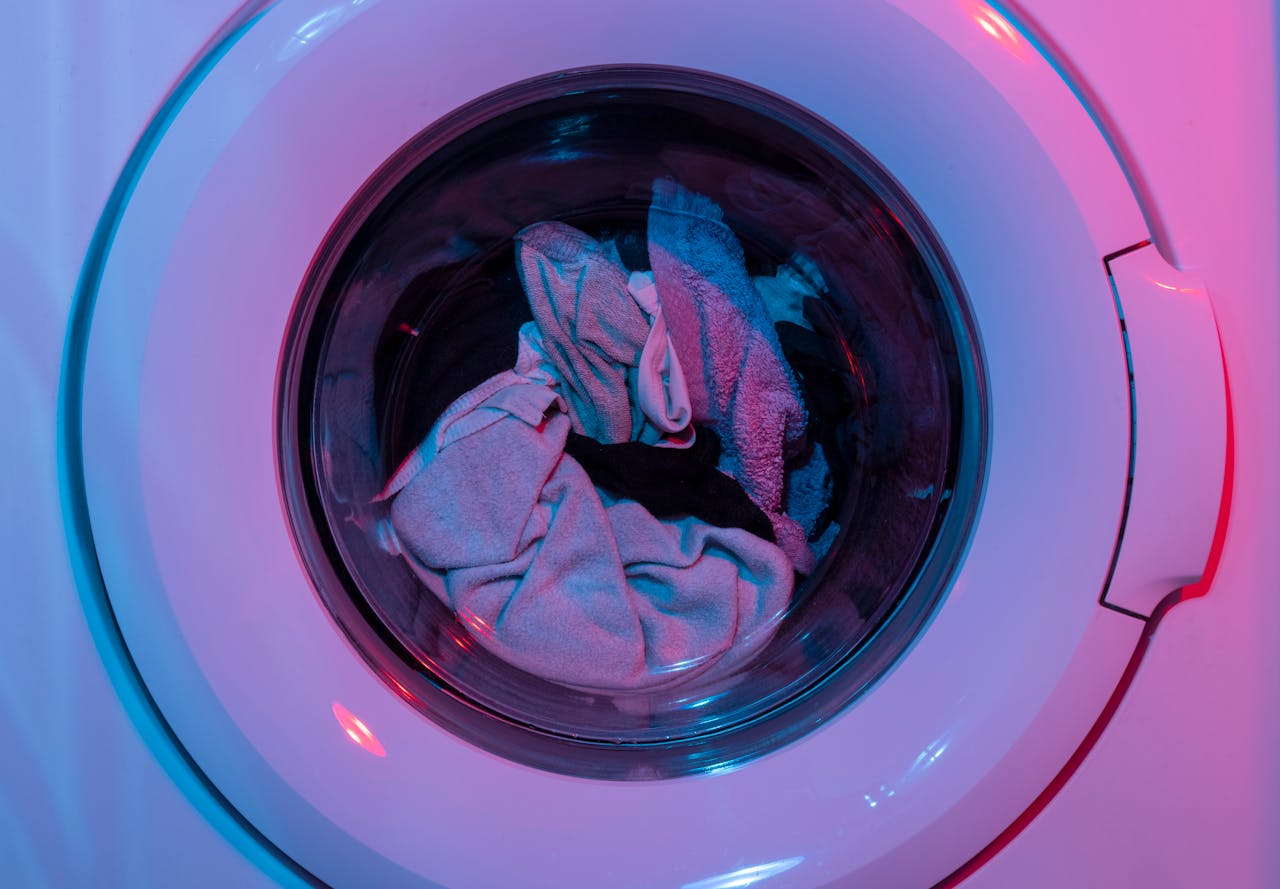Unbalanced washing machines are an issue that millions of homes face every year. We’ll teach you how to fix an imbalanced washer and explain some simple measures to prevent this from happening again.
If you’re ready to get your washing machine back on track, hiring a specialist is unnecessary. The solution might be far easier than you realize.
How Do You Know Your Washing Machine Is Unbalanced?

Washing machines and dryers can be noisy, whether owing to loose particles in the drum or a more severe issue. Noise and shaking are the first symptoms of an imbalanced washer. Does your washer sound like it’s about to take off, like an ancient rocket ship bound for space?
Most washers make that sound when it is out of balance during a spin cycle. It will pique your interest soon. An imbalanced washer might bang or vibrate excessively, causing it to slide a few inches across the floor.
When this happens, newer washers can shut off automatically, but an older machine will continue to run for better or worse. In any situation, it’s critical to adjust an uneven washer immediately. Failure to do so can result in harm or a potential leak.
Also Read: What Is Samsung Washer SUD Code? How to Fix It?
What are the Main Causes of an Unbalanced Washing Machine Load?

A washing machine can become unbalanced due to a variety of reasons. This includes:
Uneven Distribution of Laundry:
One common cause of an unbalanced load is uneven clothes distribution within the drum. When heavy items like towels or jeans clump together on one side, it creates an imbalance during the spinning cycle.
Overloading the Machine:
Overloading the washing machine is a frequent mistake that disrupts the balance. Exceeding the recommended capacity leads to uneven weight distribution, making it challenging for the machine to maintain equilibrium during the spin cycle.
Mixing Different Fabrics:
Combining fabrics with varying levels of absorbency and elasticity can contribute to an unbalanced load. Mixing heavy items with lighter, more absorbent materials can result in uneven water distribution and imbalance during the spin.
Small Items Entering Drum Seals:
Tiny garments like socks or underwear can sometimes slip into the drum seals, leading to an uneven weight distribution. This imbalance can become pronounced during the spin cycle, causing the machine to vibrate excessively.
Malfunctioning or Worn-out Shock Absorbers:
Shock absorbers play a crucial role in stabilizing the washing machine drum. When these components wear out or malfunction, the drum’s movements become less controlled, increasing the risk of unbalanced loads and vibrations.
Wear and Tear on Suspension Springs:
Suspension springs support the drum’s weight and movement. Over time, these springs can weaken or break, impacting the machine’s balance. Regular inspection and replacement of worn-out springs are essential for preventing unbalanced loads.
Water Drainage Problems:
Issues with water drainage, such as clogged pump filters or drainage pipes, can lead to an imbalance. If the water doesn’t drain efficiently, it can affect the load’s weight distribution and cause the machine to vibrate excessively.
Also Read: What Does ‘SE’ Mean On A Samsung Washer?
Guide on How to Fix an Unbalanced Washer

Step 1: Pause and Power Off
- If your washer vibrates excessively or makes unusual noises, pause the cycle and power off the machine. This initial step ensures safety and prevents further damage.
Step 2: Open the Lid or Door
- Allow the drum to come to a complete stop before opening the lid or door. This ensures you can assess the load without any moving parts posing a risk.
Step 3: Reorganize the Load
- Inspect the contents of the drum and rearrange the laundry. Ensure the load is evenly distributed, avoiding clumps of heavy items on one side.
Step 4: Remove Heavy Items
- If possible, take out any hefty items like blankets or towels. Washing these separately can prevent imbalance issues.
Step 5: Check for Foreign Objects
- Inspect the drum and rubber gasket for any foreign objects, like coins or small articles of clothing that might be causing imbalance.
Step 6: Level the Washer
- Ensure the washer is on a level surface. Use a leveling tool to check and adjust the machine’s feet. An uneven surface can contribute to imbalance.
Step 7: Use a Leveling Mat
- Place a rubber or anti-vibration mat under the washer. This helps absorb excess vibrations and ensures a more stable washing environment.
Step 8: Tighten Loose Parts
- Inspect the machine for any loose parts, such as bolts or nuts. Tighten them securely to enhance stability during operation.
Step 9: Check Suspension Springs
- Examine the suspension springs located at the base of the washer. If any are damaged or disconnected, replace them to restore balance.
Step 10: Verify Shock Absorbers
- Inspect the shock absorbers for signs of wear or damage. Worn-out shock absorbers can contribute to excessive vibrations; replace them if necessary.
Step 11: Ensure Proper Loading
- Follow the manufacturer’s guidelines for loading capacity. Overloading the washer can lead to imbalance issues. Adjust the load size accordingly.
Step 12: Run an Empty Load
- After adjusting, run an empty load to check if the issue persists. This allows you to observe the machine’s behavior without the influence of a laundry load.
Step 13: Professional Inspection
- If the problem persists despite your efforts, consider seeking professional assistance. There can be underlying issues that require expert diagnosis and repair.
Also Read: Impeller vs Agitator: Settling The Debate
Tips For Fixing An Unbalanced Washer
Dealing with an unbalanced washer can be a hassle, but a few simple tips can help you address the issue efficiently.
- Pause and Power Off: At the first sign of imbalance, pause the washing cycle and power off the machine. This prevents potential damage and ensures a safe environment to assess the situation.
- Open the Lid or Door: Allow the drum to come to a complete stop before opening the lid or door. This step ensures you can inspect the load without any moving parts posing a risk.
- Reorganize the Load: Unevenly distributed clothing is a common cause of imbalance. Take a moment to rearrange the laundry, ensuring an even distribution within the drum.
- Remove Heavy Items: Large and heavy items like blankets or towels can contribute to imbalance. Consider washing these items separately to avoid overloading the drum.
- Check for Foreign Objects: Inspect the drum and rubber gasket for any foreign objects, like coins or small articles of clothing, which might disrupt the balance. Remove any obstructions you find.
- Level the Washer: Ensure your washer is on a level surface. Use a leveling tool to check and adjust the machine’s feet. A level washer minimizes the risk of imbalance.
- Use a Leveling Mat: Place a rubber or anti-vibration mat under the washer. This helps absorb excess vibrations, providing a more stable environment for the machine.
Also Read: How to Keep Pizza Warm for a Party?
FAQs
Q: How much does it cost to fix an unbalanced washer?
The cost to fix an unbalanced washer varies, ranging from $50 to $200, depending on the severity of the issue and whether professional assistance is required.
Q: Will an unbalanced washer leak?
An unbalanced washer can lead to leaks, as the excessive vibrations can compromise the machine’s integrity, causing water to escape.
Q: What’s the best way to know if a washer is unbalanced?
The best way to know if a washer is unbalanced is to pay attention to unusual vibrations, loud noises, or if the machine visibly shakes during operation.
Q: Do top-loading washing machines need to be more balanced?
Yes, top-loading washing machines can become unbalanced, mainly if the laundry load is unevenly distributed or if heavy items are concentrated on one side of the drum. Regularly checking and redistributing the load can help prevent imbalance issues.
Final Thoughts
If your washing machine is off balance, ensure it is level and the clothes are distributed equally when you load it. If the machine continues to create noise throughout each spin cycle, you should contact an expert contractor to have your washer checked for any other reasons why it is out of balance.
Be sure to check the washing machine balance as soon as possible.
Hey welcome to my blog . I am a modern women who love to share any tips on lifestyle, health, travel. Hope you join me in this journey!

Speak Your Mind